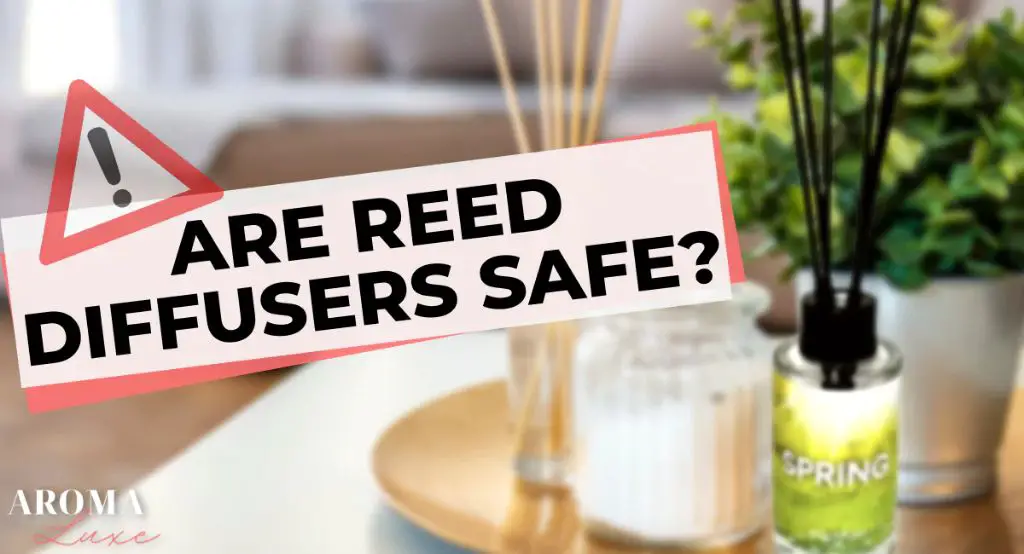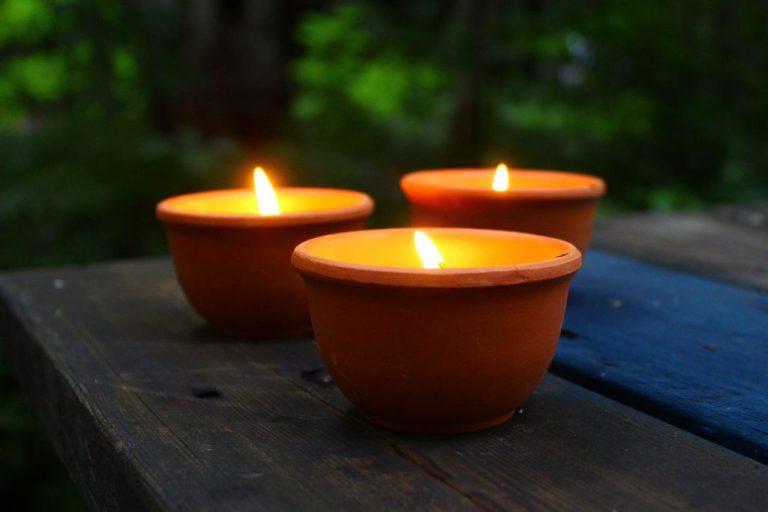Which Reed Diffusers Are Safe?
Introducing Reed Diffusers
Reed diffusers are a popular home fragrance product consisting of reed sticks placed in a vase filled with fragrant liquid oils. The reeds absorb the oil and disperse the scent into the surrounding air. Reed diffusers provide an attractive, convenient and affordable way to scent a room. They do not require electricity or heat, making them a versatile and simple fragrance option.
Reed diffusers have risen in popularity in recent years. Studies show the global reed diffuser market size was valued at USD 2.21 billion in 2021 and is projected to reach USD 3.69 billion by 2028. Their popularity stems from the fact they allow the convenience of home fragrance without the expense of electronic diffusers or artificial air fresheners. The simple reed sticks blend into most home decors and can scent a room for weeks or months.
Potential Hazards of Reed Diffusers
While reed diffusers can make a room smell pleasant, they may also pose some potential health and safety risks. Some key concerns to be aware of include:
Toxic Ingredients
Many reed diffusers contain synthetic fragrances made from harmful chemicals like phthalates and formaldehyde. Exposure to these ingredients has been linked to headaches, nausea, and other side effects (1). Look for reed diffusers made with natural essential oils instead.
Ingestion Hazards
The liquid oils used in reed diffusers can be toxic if ingested, especially by children or pets. Reed diffusers should be kept securely out of reach and not used in homes with infants or toddlers (2).
Allergies and Asthma
The fragrances in reed diffusers can trigger asthma attacks or allergic reactions in sensitive individuals. Those with scent allergies or respiratory conditions should avoid using reed diffusers.
While the risks are generally low with responsible use, being mindful of potential hazards can help consumers make educated choices about reed diffusers. Proper precautions should be taken to use reed diffusers as safely as possible.
(1) https://www.videsanges.com/blogs/niche-perfume/the-great-reed-diffuser-debate-are-they-safe
(2) https://blog.lafco.com/are-reed-diffusers-safe/
Harmful Ingredients to Avoid
When it comes to reed diffusers, there are certain ingredients that are best avoided due to potential health risks. Some key ingredients to watch out for include:
- Phthalates – These chemicals are often added to help fragrances last longer, but research links them to hormonal disruption and other issues (https://www.poison.org/articles/reed-diffusers-potential-household-risk) .
- Synthetic fragrances – The synthetic fragrance chemicals added to many diffusers have been associated with allergies, asthma, and headaches in sensitive individuals (https://www.videsanges.com/blogs/niche-perfume/the-great-reed-diffuser-debate-are-they-safe).
- Volatile organic compounds (VOCs) – These can cause eye, nose and throat irritation and are potentially carcinogenic. Many diffusers emit high levels of VOCs (https://www.videsanges.com/blogs/niche-perfume/the-great-reed-diffuser-debate-are-they-safe).
It’s best to avoid reed diffusers with these ingredients. Look for more natural, non-toxic alternatives whenever possible.
Safer Ingredient Alternatives

When selecting a reed diffuser, it’s important to check the ingredient list and avoid harmful chemicals. Some safer ingredient alternatives include:
- Essential oils like lavender, eucalyptus, and lemon – these are plant-derived and contain no synthetics.
- Vegetable oil bases like coconut, olive, and almond – these plant oils are non-toxic.
- Natural fragrances derived from flowers, fruits, herbs, etc. – these provide scent without hazardous VOCs.
Companies like Green Koala and Vi DESANGES use phthalate-free fragrances and essential oils to create safer reed diffusers. Avoid ingredients like synthetic fragrances, phthalates, and chemical solvents. The fewer ingredients, the better. Stick with reed diffusers made from simple, plant-based formulations.
Tips for Safe Use
When using reed diffusers, it’s important to follow some basic safety precautions. Here are some tips for safe use:
Proper placement is key. Don’t place the diffuser near flames or heat sources like candles, stoves, or fireplaces. Avoid plugging it into outlets near sinks or bathtubs to prevent electrocution hazards. Also be sure to place it somewhere it won’t get knocked over easily.
Keep diffusers out of reach of children and pets. Ingesting the diffuser oil can be dangerous, so store it somewhere they can’t access it. Supervise use around young kids.
Allow for proper ventilation. The scent can be overpowering in a small closed room. Keep doors and windows open to allow airflow and prevent buildup of fumes.
Don’t overdo the scent. Start with 1-2 reeds, then increase over time if needed. The scent should be subtle, not overwhelming. Too much fragrance in a confined space can cause headaches or nausea.
Consider using diffusers in moderately populated rooms only. Bedrooms and office spaces are ideal. Avoid using in large open concept rooms.
Check the reeds occasionally. Replace them if they appear heavily saturated or aren’t diffusing effectively. Rotating reeds allows them to dry out and refresh.
Sources:
https://anticafarmacista.com/pages/reed-diffuser-guide
https://snugscent.co.uk/product-safety/reed-diffuser-safety/
Making Your Own Reed Diffusers
Making your own reed diffusers at home has many benefits. You can control the ingredients to avoid toxic chemicals and use natural essential oils instead. DIY diffusers also allow you to customize the scents and strengths to your personal preference. They are much more affordable than buying pre-made diffusers at the store. Some common recipe ingredients include:
- Carrier oils like fractionated coconut oil, almond oil, or jojoba oil
- Essential oils like lavender, lemon, peppermint, eucalyptus
- Vodka or witch hazel as a dispersant
A simple reed diffuser recipe is to use 1/4 cup of carrier oil, 12-25 drops of your chosen essential oil, and 2 tablespoons of vodka or witch hazel. Make sure to use glass or ceramic containers, and cut the reeds appropriately so they reach the bottom. The carrier oil helps diffuse the essential oils into the air. Vodka helps evenly distribute the oils. Follow your favorite DIY diffuser recipes and enjoy natural scents made by you! For specific recipes see: https://naturesnurtureblog.com/essential-oil-reed-diffusers/
Top Safety Certifications
When shopping for safe reed diffusers, look for products certified by reputable third-party organizations that set health and safety standards. Some of the top certifications to look for include:
ECOCERT – A certification for products made with plant-based ingredients that meet environmental and health standards. ECOCERT certified products avoid harmful chemicals and use natural fragrances.
NPA – The Natural Products Association provides certifications for natural personal care and household products. NPA certification indicates a product is made with safe ingredients and avoids chemicals of concern.
USDA Organic – The U.S. Department of Agriculture’s organic certification is one of the most stringent, requiring 95-100% organic ingredients and third-party auditing. USDA Organic products cannot contain any artificial ingredients.
Searching for reed diffusers with one of these reputable certifications can help identify products made with safer, non-toxic ingredients and give peace of mind.
The Safest Reed Diffuser Brands
When it comes to finding the safest reed diffuser brands, there are a few that stand out for their commitment to using natural, non-toxic ingredients. Here are some of the top brands to look for:
Mrs. Meyer’s Clean Day Reed Diffusers only use essential oils and other plant-derived ingredients for their fragrances. All of their formulas are cruelty-free and don’t contain parabens, phthalates or synthetic fragrances (source: https://www.mrsmeyers.com/product-type/reed-diffusers/).
Vitruvi makes reed diffusers with 100% natural ingredients sourced from around the world. Their formulas are free of synthetic dyes, phthalates, sulfates, parabens, and artificial fragrances. Vitruvi also uses recyclable glass bottles and sustainable bamboo reeds (source: https://vitruvi.com/collections/reed-diffusers).
Grove Co. offers reed diffusers made with essential oils and ethically-sourced ingredients. Their formulas are non-toxic, cruelty-free, vegan, and not tested on animals. Grove Co. diffusers use recyclable components and their fragrances come in a variety of natural scents (source: https://www.grove.co/catalog/category/reed-diffusers-room-spray/).
By choosing reed diffusers from reputable brands that use safe, natural formulas, you can enjoy beautiful scents in your home without unwanted chemicals.
Safer Alternatives to Reed Diffusers
There are several safer alternatives to traditional reed diffusers that allow you to enjoy nice scents in your home without the risks. Here are some options to consider:
Essential oil sprays are a great option. You simply mix purified water with a few drops of your favorite pure essential oil in a spray bottle. Shake it up and mist it around the room to lightly scent the air. Some popular essential oils for homemade sprays are lavender, lemon, eucalyptus and peppermint (From High-Tech Diffusers to Fancy Room Sprays, Here Are Our Favorite Candle Alternatives).
Aromatherapy diffusers are another alternative. These use ultrasonic technology to disperse essential oils as a fine mist into the air. They provide aromatic benefits without the risks of open flames or constant heat. Leading brands like SpaRoom and InnoGear make ultrasonic models with auto shut-off and other safety features.
Wax warmers are a great option too. They warm scented wax melts to release fragrance without an open flame. Popular brands like Scentsy and Yankee Candle sell warmer units and wax cubes in many scent varieties.
If you still prefer the ambiance of candles, choose products made with natural soy, beeswax or vegetable waxes. Look for fragrances from pure essential oils rather than synthetic parfums. Always keep candles on a stable, fireproof surface away from drafts and vents (How To Make Homemade Reed Diffusers).
With so many alternatives available today, you can find safer, non-toxic ways to scent your home without compromising health or safety.
Bottom Line on Safest Choices
When shopping for reed diffusers, there are a few key things to keep in mind:
- Avoid ingredients like synthetic fragrance oils, phthalates, and formaldehyde-releasing preservatives.
- Look for diffusers made with essential oils, vegetable-based wax, and natural bamboo reeds.
- Check for safety certifications like ECOCERT, which verifies natural, organic ingredients.
- Stick to reputable brands that use high-quality, non-toxic formulas like Antica Farmacista and Thymes.
- Never let children or pets around the reeds, keep away from heat sources, and allow proper ventilation.
- Consider safer alternatives like essential oil room sprays, soy candles, or electric diffusers.
By avoiding toxic chemicals and being mindful of proper use, it’s possible to enjoy reed diffusers safely. The brands and ingredients listed here give you a great starting point to make an informed decision.


